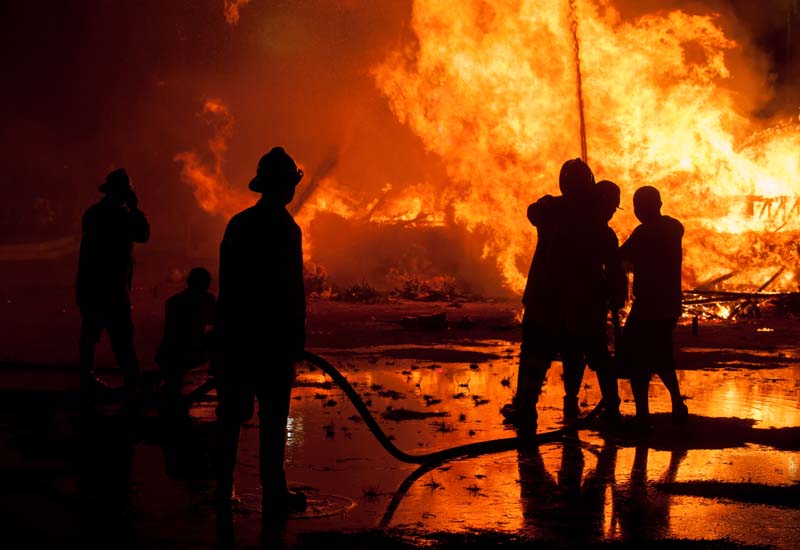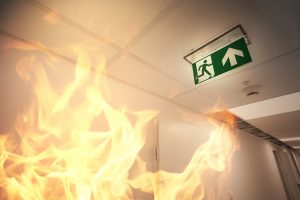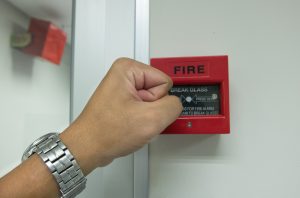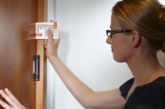
Steve Martin discusses the Regulatory Reform Fire Safety Order.
Fire safety is one of the paramount health and safety concerns for many organisations. While it’s impossible to completely prevent fires from happening, it is possible to limit their impact by making sure the right procedures are in place. And one piece of legislation — the Regulatory Reform Fire Safety Order (RRO) 2005 — was introduced to support attempts to do this.
The RRO replaced a plethora of laws that governed fire safety and aimed to ensure the process involved in managing it was easier for all concerned and the risks, as well as the consequences, of fires breaking out were minimalised. At the heart of the RRO is the desire to create one regime that can be understood and administered easily by both the organisations that must comply with it and the authorities that enforce it.
It places the onus on the property owner to take the lead on managing fire safety and emphasises the importance of risk reduction and fire prevention through the requirement for each organisation to have a ‘Responsible Person’ — an individual who is legally required to ensure the organisation complies with the Order.
Position of responsibility
Crucial to this is their obligation to carry out a fire risk assessment that identifies all the risks and hazards within the premises, and record them if the organisation involved has more than five employees — or appoint someone who is a qualified Fire Risk Assessor to do it. Given the specialist nature of Fire Risk Assessments, and the serious consequences that can arise if they are not properly done, I would advise using an independent third party to carry it out — someone who has qualified through the BAFE 205 Scheme and who is on the Fire Risk Assessment Register.
 Once these steps have been taken, the Responsible Person is also required to consider who may be especially at risk in the event of a fire and create a plan to reduce this as far as is possible, and develop an emergency plan in case a fire breaks out. This — and the Risk Assessment — must be regularly reviewed to ensure they reflect the needs of all users and visitors, plus any changes in the building and how the business operates.
Once these steps have been taken, the Responsible Person is also required to consider who may be especially at risk in the event of a fire and create a plan to reduce this as far as is possible, and develop an emergency plan in case a fire breaks out. This — and the Risk Assessment — must be regularly reviewed to ensure they reflect the needs of all users and visitors, plus any changes in the building and how the business operates.
This may sound like a large amount of work for one person, but when you consider the fact this person will be the point of contact for the relevant enforcing fire authority, and it will mean one person will oversee all fire policies, procedures and training (including fire drills), it makes sense to have this consolidated into one point of contact within the business, instead of spread around multiple people with additional — and, in some cases, widely different — responsibilities.
However, for this appointed individual to carry out their role successfully, they need to be given a budget and the freedom to release it, so they can make any necessary improvements to the building’s fire safety without delay, as well as the training they need to perform the role and liaise with the specialists they will come into contact with.
Third party accreditation
Another key element of the Responsible Person’s role is ensuring the building’s fire systems are ‘maintained in an efficient state, in efficient working order and in good repair’ — crucial for identifying and fighting fires — as well as making sure occupants have maximum evacuation time in the event of a fire. The most effective way of doing this is to ensure the people who install and maintain these systems have the relevant skills, knowledge and experience to do so.

There are two main ways of demonstrating third party accreditation — either through achieving specialised accreditation by a recognised organisation (in the case of fire systems the two preferred options are BAFE SP203-1 and LPS 1014) or through membership of a relevant trade association.
The former of those two options is often carried out via an assessment process, while the latter will require an evaluation of the contractors’ skills as well as a commitment they will adhere to industry standards and abide by the association’s Codes of Conduct and Guarantee of Work. In our case, ECA members who carry out work on fire and security systems form part of the Fire and Security Association (FSA), our specialist association for fire and security contractors, which means all members have third party accreditation that is relevant to their specialist discipline.
Final check
Checking whether your contractors are accredited may sound like a time intensive activity, but given the legal, financial and reputational consequences of fires, it’s an activity that is well worth carrying out — especially as breaches of the RRO are punishable by fines of up to £10,000 per breach and/or imprisonment of the Responsible Person for up to two years.
Willingness to invest time — and in some cases money — is key to ensuring compliance with the RRO. Continually identifying and managing the risks associated with fires will take time — but will make your staff and visitors aware of the importance you place on fire safety — an approach which, could, one day, save lives.
Steve Martin is head of the Fire and Security Association (FSA)



